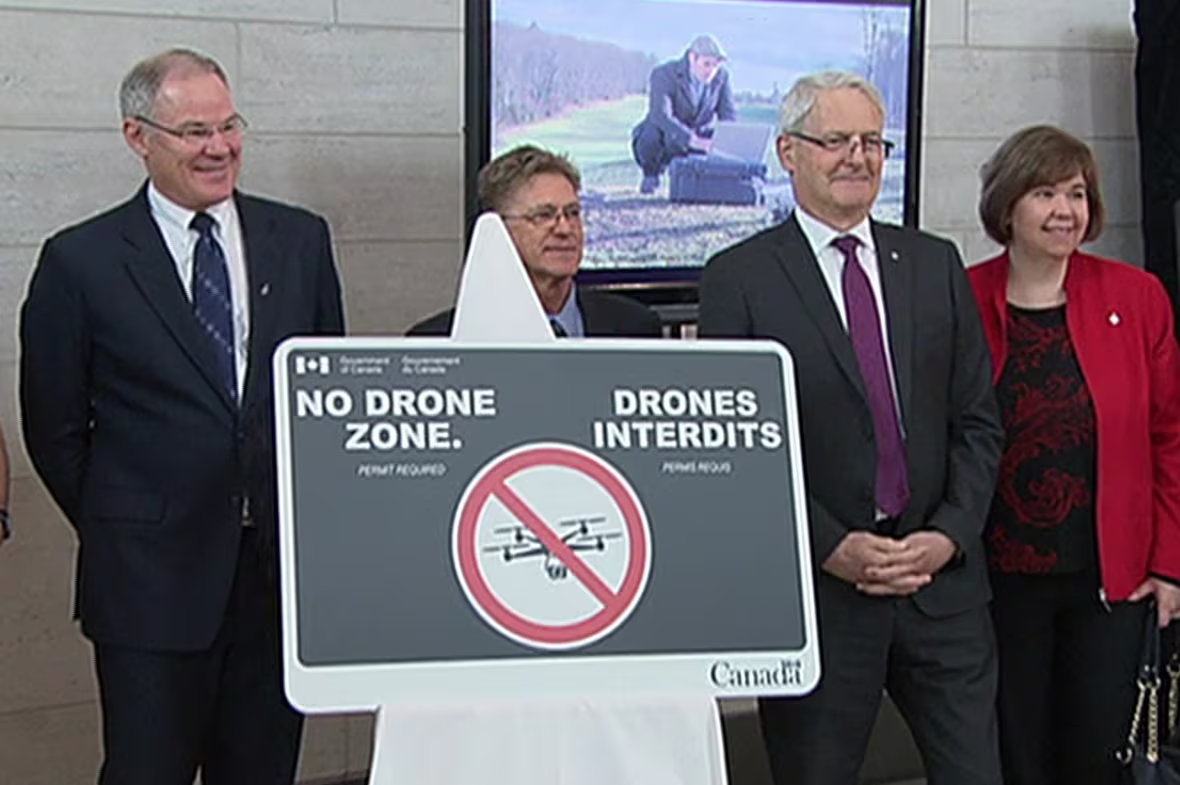Drone operator who had close call with plane sought by Winnipeg police
Drone came within 25 metres of commercial aircraft as it was trying to land on Saturday
Whoever flew a drone that came "incredibly close" to a commercial passenger plane as it was landing in Winnipeg over the weekend is in serious trouble, say police, but investigators have yet to find that person.
The drone, also known as an unmanned aerial vehicle (UAV), came within 25 metres of an aircraft that was flying at an altitude of about 900 metres in airspace near the University of Manitoba on Saturday.
- Plane has close call with drone while landing in Winnipeg
- 'No drone zone' signs revealed for airports, more rules coming, minister says
"That's incredibly close," Const. Jason Michalyshen told reporters on Monday.

Investigators have no leads so far on the drone or who operated it, said Michalyshen, who is asking for the public's help.
"We certainly ask all members of the public if there is further information — things they observed, if they know someone who might have been involved in this incident and aren't coming forward — you know, we certainly would appreciate a phone call so that we can move the investigation forward," Michalyshen said.
"If and when those individuals are identified, charges will be pursued, without a doubt."
'Oblivious' to rules
Michalyshen called Saturday's incident "a really unique incident" but added that UAVs — including more advanced models like the one that's believed to have been involved in this case — are becoming more common in Winnipeg.
"They are available to Joe Consumer for as little as hundreds of dollars. They can cost thousands of dollars. In this case, we're obviously talking about something that's quite advanced," he said.
"There are individuals who are willing to take the risk, who are oblivious to the rules and regulations of their operation, and we would hate for anyone's safety to be compromised because they don't know what they're doing."
Michalyshen added that police are concerned because the safety of aircraft and people were at risk.
"Any form of distraction is one part of it. But certainly if there was a collision in air, involving this aircraft, it could be a catastrophic situation," he said.
Unmanned air vehicles like drones are subject to Transport Canada restrictions regarding altitude, purpose, size and area of use. Commercial drone operators must also have a Special Flight Operations Certificate.
Drones are currently not allowed to fly within nine kilometres of airports, and anyone found to be endangering aircraft could be subject to fines ranging from $3,000 to $25,000 and/or jail time.
A rising number of close calls between drones and planes across Canada prompted the federal government to unveil "no drone zone" signs for airports on Monday and announce that it is drafting legislation to strengthen drone rules.
The government is also considering new flight rules for drones, as well as implementing pilot permits and drone design standards, said Transport Minister Marc Garneau.

